Physical Address
304 North Cardinal St.
Dorchester Center, MA 02124
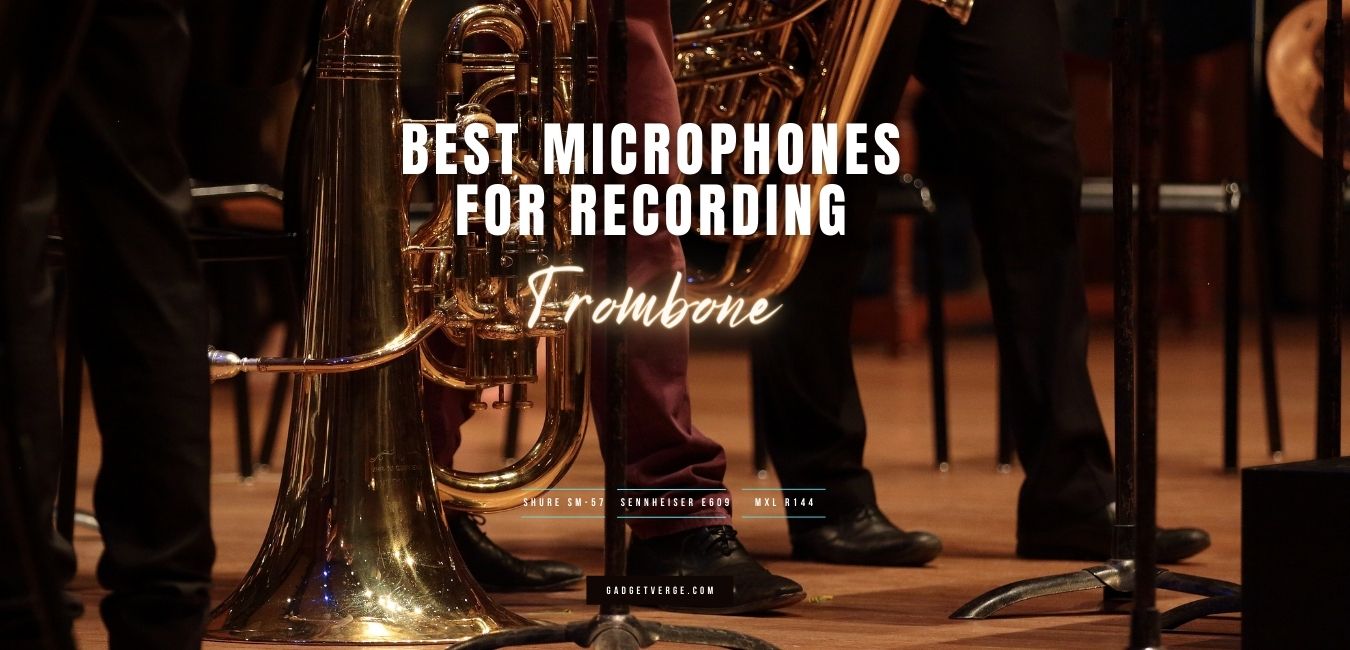

We’re passionate about music and our recommendations are genuine. If you buy through links on our site, we may earn a small affiliate commission at no extra cost to you.
The trombone is a brass instrument that has been used in orchestras, jazz bands, and other musical venues for decades. The popularity of the device hasn’t declined over time because it’s still as popular as ever.
However, if you are a trombone player, you know how difficult it can be to find the best microphones for recording trombone. This is because there are so many different microphones out there, and they all have their pros and cons.
This blog post will list our top 5 picks for great microphones that work well with trombonists. All these mics are good quality but come at various price points. So, no matter what your budget may be, there is something on this list for everyone.
Dynamic microphone with Cardioid polar pattern. Overall best in terms of sound quality, features, and durability for any starter.
Sennheiser E609 (Best in terms of portability):
Dynamic microphone with Super-Cardioid polar pattern. A perfect pick if you are looking for a portable microphone on a low budget.
MXL R144 (Best ribbon mic at a low budget):
A good choice if you are looking for a ribbon microphone around as a starter. Its sound quality is not the best out there, but it is still a great option for miking trombones.
Electro-Voice RE20 (Best mid-range):
Dynamic microphone with Cardioid polar pattern. This is one of the best mid-range microphones ever produced in terms of sound quality, durability, and versatility.
Shure Beta 98H/C (Best clip-on):
Clip-on condenser microphone with Cardioid polar pattern. A great option of the instrument player needs to move during the performance.
The Shure SM-57 is an industry-standard microphone that musicians have used for decades. It’s made of die-cast steel, which means it can withstand any amount of wear and tear without breaking down on you. In addition, it comes with a shock mount, so you don’t have to worry about unwanted vibrations ruining your recording session.
The Shure SM-57 is made of die-cast steel, making it tough and durable to handle any damage. In addition, it is designed to be integrated with a grille or resonator assembly to play instruments and amplifiers closely. This creates an enhanced proximity effect, which results in a more pronounced and natural bass response. It’s perfect for those who want to play their instrument up close without sacrificing sound quality or volume.
However, the Shure SM-57 doesn’t have a built-in power switch, which may create inconveniences during live performances or recordings.
The Shure SM57 is a dynamic microphone that delivers quality sound and performance in studio and stage settings. It has a cardioid pickup pattern. As a result, it captures sound from one direction while rejecting sounds coming from other directions. This makes it perfect for miking trombones with less interference from unwanted noise or feedback.
Frequency response: The Shure SM57 microphone can pick up frequencies between 40 and 15kHz, making it ideal for capturing trombone sound. This excellent frequency response range helps to capture the instrument’s warmth and richness without sounding too thick or boomy, thanks in part to its natural presence boost.


Directionality: The Shure SM57 comes up with a unidirectional pickup pattern. It picks up sound exactly where you want it while rejecting unwanted background noise from other instruments or vocals behind your primary source of the sound, making it ideal for recording instruments like trombones, drums, guitars, etc.
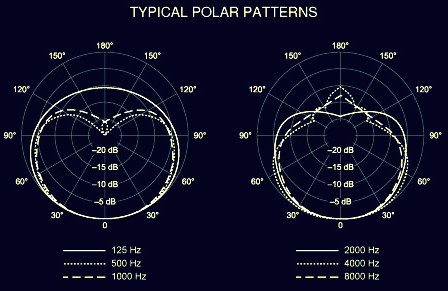

Sensitivity: The SM57 has a 1.6 mV/Pa sensitivity rating. It can amplify noises that are too quiet to hear from other microphones on stage or large arenas without distortion by feedback loops and sound waves bouncing off nearby walls.
The Shure SM-57 is a good microphone for miking trombones. It’s durable and comes with its own shock mount, which can help eliminate unwanted vibrations that might ruin your session. So if you’re looking to buy the best mic for trombone recordings, this would be it.
The Sennheiser E609 microphone is an excellent option for trombone players. It captures the sound of your instrument beautifully and delivers an authentic, warm tone. In addition, the mic offers a rugged construction that can withstand travel rigors with its aluminum body and steel grille. Moreover, this mic has excellent feedback rejection, which will help you get rid of unexpected pops from your amps.


The Sennheiser E609 is a compact and lightweight microphone that makes it easy for you to store. It’s designed with 2 inches in diameter, 5.2-inch length, and weighs only 4.9 ounces. As a result, it is easy to pack it up while you are not using the microphone.
The Sennheiser e609 Silver has a rugged metal body and a powerful neodymium ferrous magnet, making it stand out from other microphones. In addition, it is well suited for hanging over an amp or cab while resting on the grill without using a stand because of its side-address form factor.
The Sennheiser E609 is the perfect mic for recording trombones. It is designed to be placed in front of the source and crank up your gain without feedback or distortion. It also has an off-axis noise rejection system, ignoring unwanted background noise or bleeding from other mics.
Frequency response: The Sennheiser E609 comes with an exceptional frequency response of 40 Hz to 15 kHz. This wide range ensures that the mic can pick up sounds from deep tones through high-pitched ones. As a result, it is an ideal option for capturing trombone sounds.
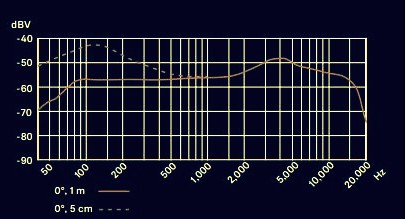

Directionality: The Sennheiser E609 has a super-cardioid design that allows you to focus on recording one instrument at a time while blocking out ambient noise from other instruments playing nearby. Because this mic cuts off some sound directly behind it.
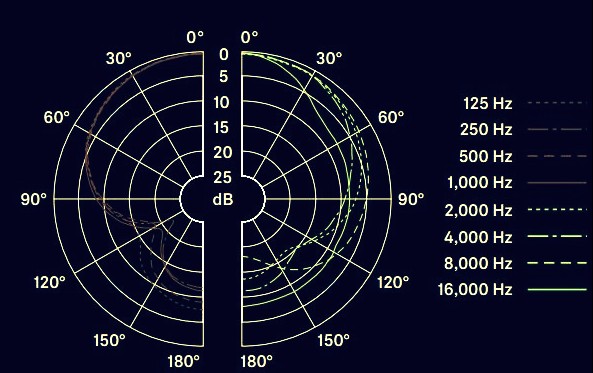

However, you need to maintain an appropriate distance in front of the mic. Otherwise, the output will sound distant because the instrument is not directly facing the diaphragm. But if you are too far away, all of the instruments will sound muddled together with no separation between them.
Sensitivity: The sensitivity rating of the Sennheiser E609 is 1.5 mV/Pa, which allows it to handle high sound pressure levels effectively without giving feedback.
This mic is perfect for recording in tight proximity, so you won’t have to worry about background noise or distortion when trying to capture audio from afar.
The Sennheiser E609 is a highly reviewed and sought-after device to record instruments like trombones. With a durable, compact design, the features of this mic are fantastic. So whether you’re looking for a microphone that offers clarity in sound to record trombones or need one to withstand extreme conditions, this mic has it all.
The MXL R144 is the perfect microphone for recording trombones at a budget-friendly price. It’s designed to capture all of the warmth and smoothness that makes this instrument so special. You can also use it on vocals, acoustic instruments, and guitar amps. The shock mount, cleaning cloths, and silver flight case are included with this purchase to ensure quality recordings every time you use it.
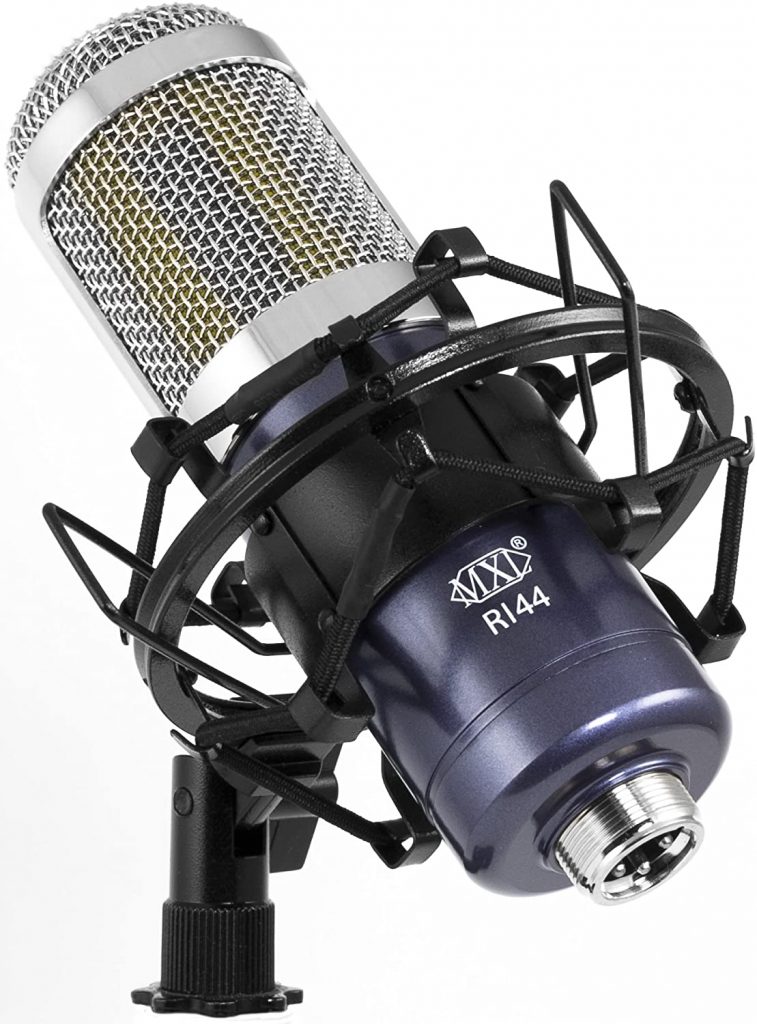

The MXL R144 has a figure-8 or bidirectional pickup pattern. This means it picks up signals equally from either side of the microphone and rejects those on opposite sides.
It is made out of all metal, including the grille. However, if you push it too hard against a wall or another object, there might be some wiggle room and possible damage to the mic. Therefore, we recommend using a pop filter when recording any instrument with this microphone because it will protect you from potential wind and other types of damage that might occur while performing for your audience or in studio settings.
Additionally, the shock mount helps reduce vibrations from the floor and other surfaces, which will help keep your recordings clean and clear.
The R144 is the perfect microphone for recording trombones. It has an extended frequency response that captures every note from low to high. At the same time, its ribbon design ensures smoothness and warmth without any harshness or sibilance.
However, the MXL R144 is certainly not going to produce the same sound as a condenser mic. It’s missing that classic airiness, but it provides a unique ribbon tone for instrument recording.
Frequency response: For a warm sound with presence, the R144 has a frequency response of 20Hz to 17kHz and boosts around 300Hz and 6kHz. The low-end is fairly weak but provides an overall pleasant experience.


Directionality: This microphone has an 8-pattern pickup. It will only pick up sounds from one side of the mic and not both sides like other microphones. This makes it easier to isolate vocals and make them sound clear and crisp with no background noise or interference.
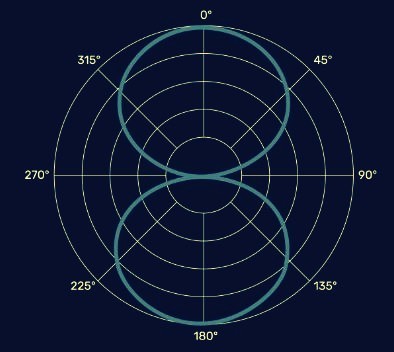

Sensitivity: The sensitivity rating of the R144 is 1.6 mV/Pa.
Due to its low sensitivity, it requires a quality preamplifier with minimal operating noise, or you will get distortion from the high output voltage required by this mic.
The MXL R144 microphone can handle Sound Pressure Levels (SPL) of up to 130 decibels, making it an ideal choice for recording trombones.
The MXL R144 is a good ribbon microphone for trombone recording. This could be an ideal option for those interested in the unique sound of a ribbon mic but don’t want to spend too much money on one.
The Electro-Voice RE20 is one of the most popular microphones used by professionals. It has a smooth frequency range and avoids the proximity effect due to its variable diameter design. In addition, the microphone can be manually adjusted for bass tones or other low frequencies when recording trombones in particular.


The Electro-Voice RE20 is also a great gear to record deep voices?
We have a detailed guide here: Best microphones for recording deep voice



The Electro-Voice RE20 is a high-quality microphone that has both premium aesthetics and durability. The metallic body of the mic gives it an expensive feel, while its large grill ensures this will stand out on stage. Its heavyweight adds to its sturdy design, making us think we could throw around without worry for damage or breaking – which would make sense given how durable EV mics are known to be.
The RE20 is a dynamic microphone with an exceptionally reactive diaphragm and low-mass voice coil. This makes it perfect for the trombone sound because of its ability to capture nuances in very precise detail.
Frequency response: The frequency response of the Electro-Voice RE20 is 45 Hz – 18 kHz.
The frequency response of the Electro-Voice RE20 has a strong low end below 400 Hz, with cuts at around 5 kHz and 18kHz. Thus, it is well suited for recording trombones.
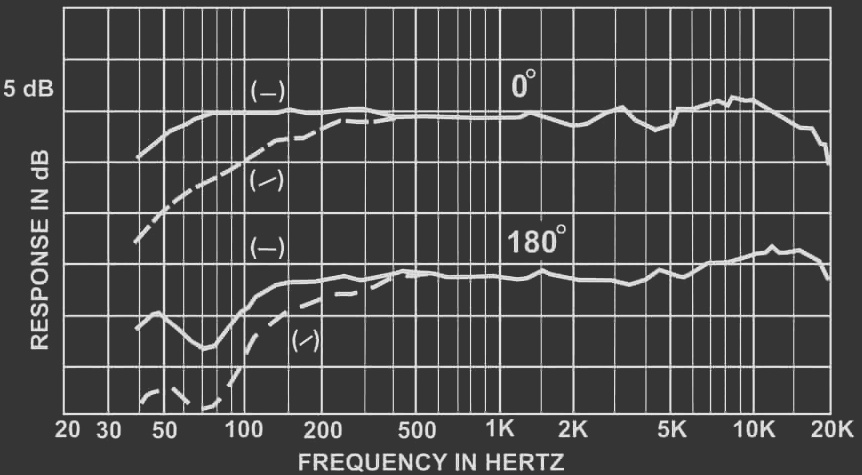

Directionality: The RE20 is a cardioid microphone that helps maintain the trombone sound even if it moves off-axis slightly from the mic. This is because there isn’t an excessive bass boost as you get closer to this microphone and its Variable-D technology.
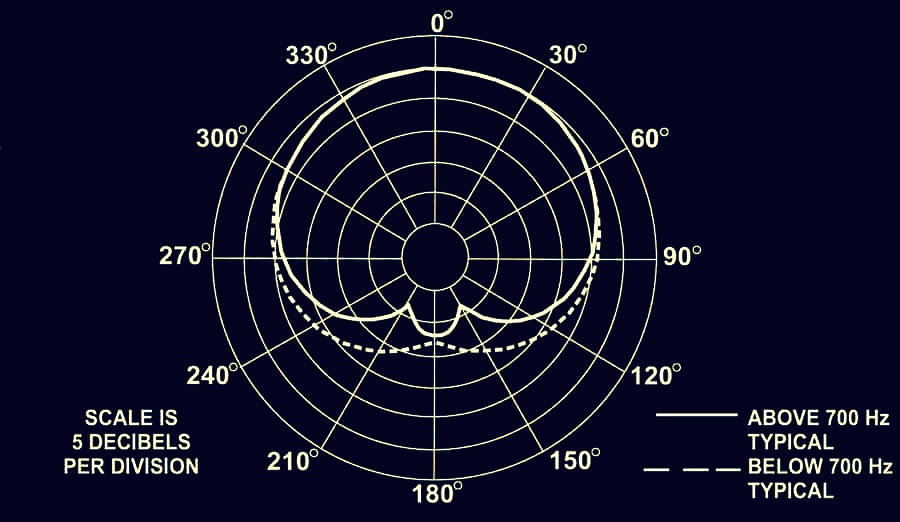

The RE20 does not pick up feedback from monitors in a live setting. The cardioid pattern allows for placement only directly facing and rejects sound from 180 degrees off the axis. The microphone also has about 16-18 dB of rejection at around 180-degree angles to its front, which avoids picking up any additional sounds that may cause unwanted noise, whether voices or other instruments on stage.
Sensitivity: The RE20 is an excellent dynamic microphone that excels in capturing the subtle nuances of a trombone. It has low sensitivity at 1.5 mV/Pa, but this can be attributed to its large Acoustalloy diaphragm and aluminum voice coil, both exceptional materials for sound capture.
If you are looking for the best mid-budget microphone on the market, then Electro-Voice RE20 is a good option. It is bulkier and heavier than other alternatives, but it’s also more expensive. The sound tone can be described as deep, rich, and neutral with quite a smoothness, making this mic perfect for recording vocals or trombones.
The Shure Beta 98H/C is an amazing choice for trombonists. With a customized design and integrated isolation mount, this microphone provides the best sound quality while reducing unwanted noise from being picked up by your instrument. So whether you’re using it to amplify your performance or need something small that can clamp onto any wind instrument, this mic will give you excellent results every time.
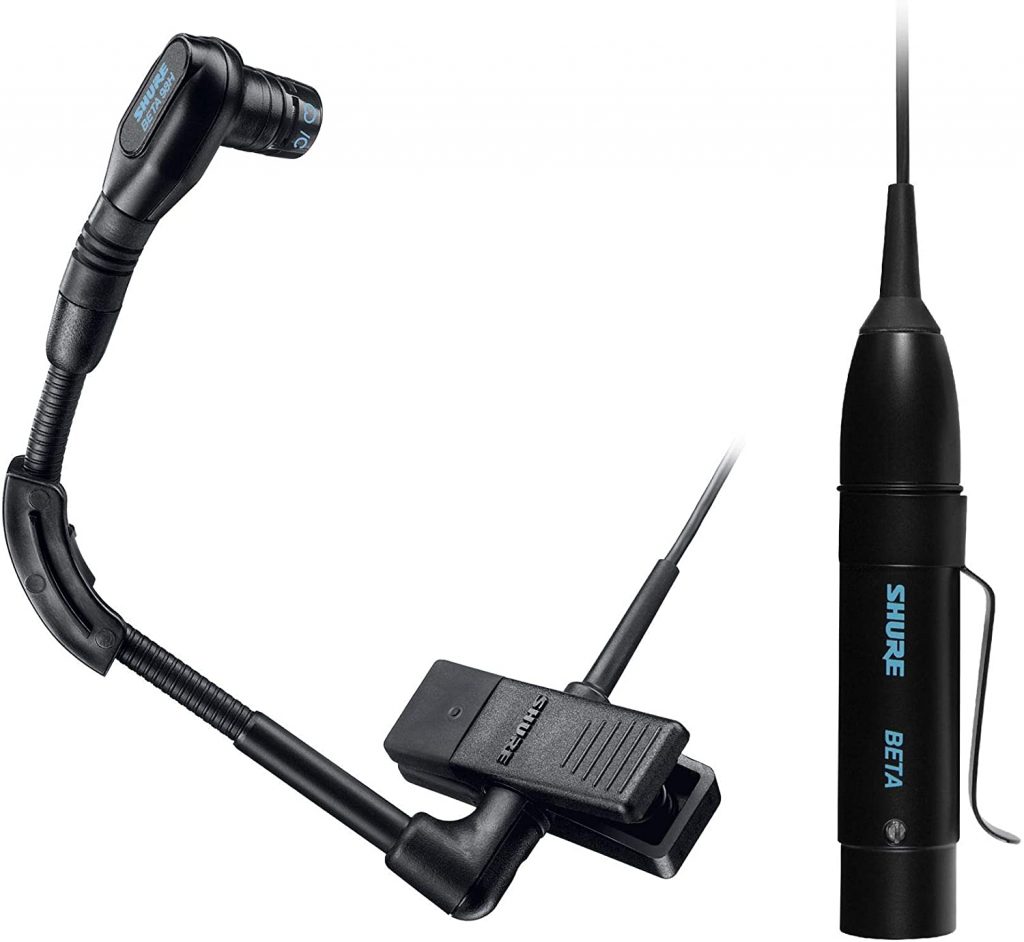

The Shure Beta 98H/C microphone is great for miking brass instruments. It has an integrated gooseneck with a built-in angle brace, shock mount to reduce noise and vibration from the instrument, and ratcheting swivel joint. The rubber isolation on this mic ensures no rattling or vibrations in your recording, which will leave you sounding like a pro.
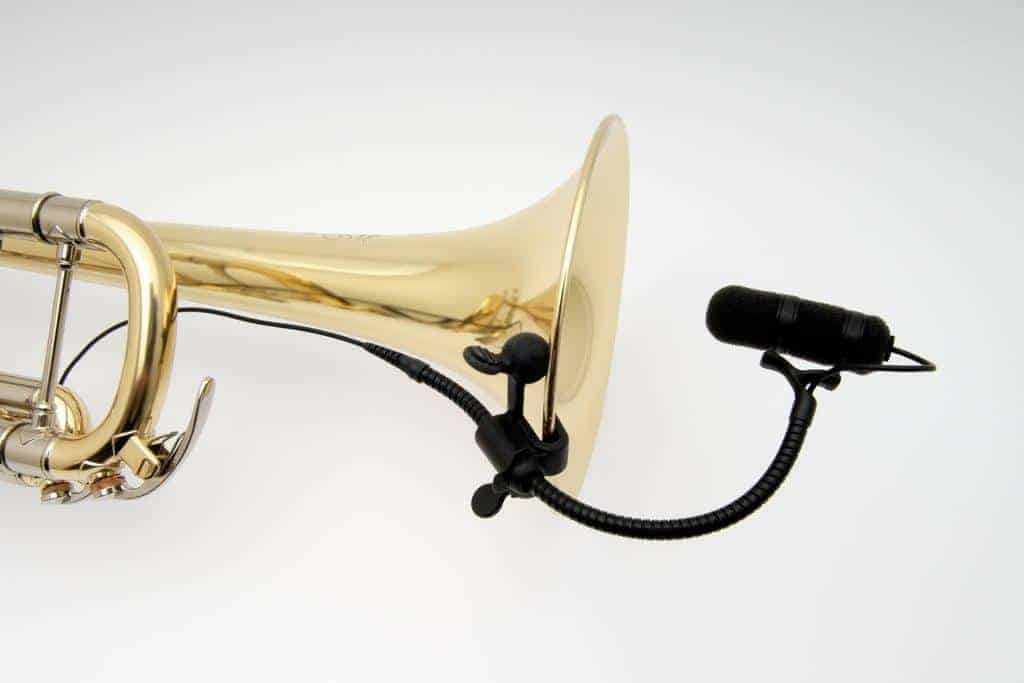

The Shure Beta 98H/C is the perfect choice for anyone who needs to use their mic in high-stress environments. It has an enamel-coated metal alloy construction and dent-resistant steel mesh grille, so it’s built to last through years of wear and tear.
The microphone comes with various accessories, including a cable management device, storage bag, and snap-on windscreen.
The Shure Beta 98H/C is an amazing choice for trombonists. With its wide frequency response, it captures the full spectrum of sound a musician produces on their instrument and reproduces it faithfully to create audio that’s as true-to-life as possible.
Frequency Response: The frequency response of the Shure Beta 98H/C is 20Hz – 20,000 Hz.
The presence boost in the Beta 98H/C with almost a 5 dB boost around 6-7 kHz will help the trombone stand out in a live mix. However, the presence boost may interfere with the presence of vocals.


Directionality: The Beta 98H/C cardioid microphone is the perfect choice for trombone players because of its noise rejection capabilities. It reduces feedback at higher frequencies. A low pass filter on your mixer will help reduce any background sound or hum before you begin playing.
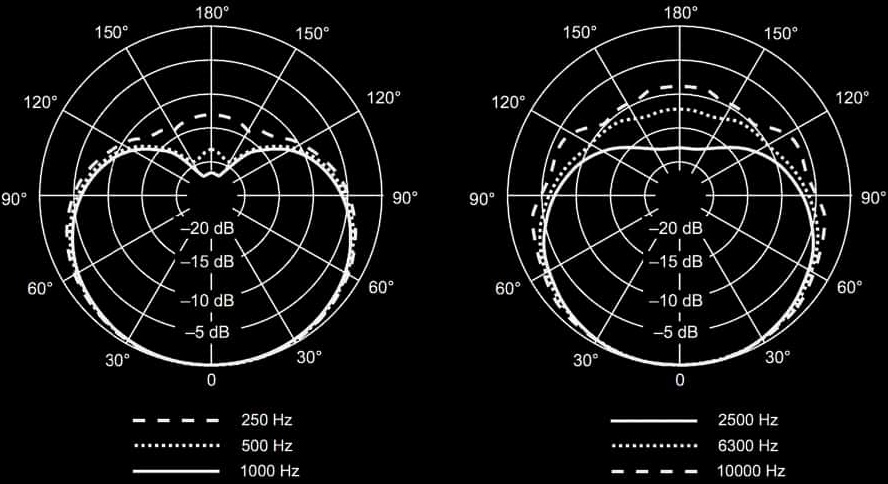

Sensitivity: The sensitivity rating of Shure Beta 98H/C is 1.6 mV/Pa.
It is a low-sensitivity mic, meaning it won’t pick up extraneous sounds outside of the trombone as much. This makes sense for live performances because you don’t want other noise interfering with your sound.
If you’re looking for a microphone to amplify your trombone performance or just want something small and easy to clamp onto any wind instrument. In that case, the Shure Beta 98H/C is an excellent choice. This microphone offers great sound quality without unwanted noise interference while still remaining lightweight enough for travel.



Many things go into making the best trombone microphone, but we’ll discuss a few of the most important ones.
The most popular type of connector used in microphones is the XLR. This is because it has a balanced output and can be daisy-chained to other devices without losing signal quality. However, some microphones have dual connectors, which allow you to change from XLR to TS without switching cables.
A low-impedance mic requires less voltage than one with higher impedance, so they’re easier to use with lower-voltage equipment like mixers and preamps. This makes them ideal for live performances where there may not be enough power available from the mixer or other gear. They also tend to have better frequency responses than high-impedance mics because they don’t require as much amplification at the source.
However, the low-impedance mics generally cost more than their high-impedance counterparts because of this increased complexity in the design and manufacturing process. Therefore, we recommend using a low impedance mic if you plan on recording yourself playing trombone through any audio interface or mixing board that has phantom power capabilities built into it – such as those found on many modern-day digital pianos, keyboards, synthesizers, etc.
On the other hand, if you’re planning to plug your trombone directly into an amplifier without any additional processing, we suggest going with a high impedance mic instead.
There are two main types of polar patterns available, which include omnidirectional and unidirectional. When a microphone has an omnidirectional polar pattern, it can pick up sounds equally well from all directions. When this occurs, we say that the mic is picking up sound evenly across its diaphragm. On the other hand, if they have unidirectional (also called cardioid) mics, they can create a more focused sound by filtering out everything but what’s in front of them and then some less noise coming through their rear side or backside.
Trombone sounds can be captured by positioning a microphone around the bell. When recording trombones, off-axis coloration is your friend because it changes what you hear in each position, capturing different tones and dynamics depending on where you place the mic.
To achieve a warm sound, trombone players should roll off high frequencies. Unfortunately, extended frequency responses often give the instrument too bright of output for most musicians to want to use it in their music.
Microphones vary widely in their noise handling. However, the better a microphone is at suppressing noise, the more suitable it will be for trombone players recording their instrument. This is because they won’t have to worry about any background noises that may affect how well the recordings sound.
When choosing a microphone, be sure to get one that can withstand some physical abuse. A live mic will likely encounter rough times at some point, and you don’t want it breaking down with all eyes on the stage.
Brass instruments such as the trumpet, trombone, and french horn emit sound from a vibrating column of air inside the mouthpiece. The player makes this happen by buzzing their lips while blowing into it a cup or funnel-shaped mouthpiece.
To produce higher and lower pitches, the player adjusts their opening between their lips to change vibration frequency in that area. A length of tubing connects to the bell at the end. The shorter the length of tubing, the smaller and higher-pitched your note will be. On the other hand, longer lengths make deeper or lower-pitched notes.
The pitch of a brass instrument depends on the length, volume, and speed at which players buzz their lips. To play all 12 notes from the chromatic scale, players need to use slides or valves to alter their instruments’ lengths accordingly.
As you can see, the trombone is a versatile instrument that requires specific equipment for optimal performance. We hope this article has been informative and helped guide your purchase decision as you explore microphones options for recording trombones. If so, we would love it if you shared this post with other musicians who might need some guidance.